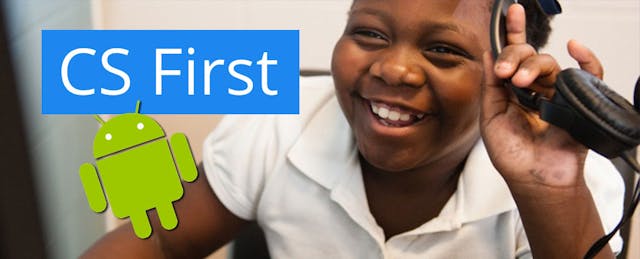Back in July, one of EdSurge's coding-themed articles went viral. It told the story of the genesis of Google's CS First initiative--a program designed by a team of educators and computer scientists to get students interested in coding through afterschool and summer programs, but at a very low cost. Back then, the program had yet to fully launch, and Google has just wrapped a 1200+ student pilot in the Charleston, South Carolina area.
Fast-forward to now. As of March 20, the number of students engaging in CS First clubs has hit the 27,000 mark across five continents--70% of which are females and/or minorities. (Click here for the most up-to-date numbers.) “Most growth outside the U.S. has been completely organic, as we haven't done big outreach into other countries," says Kate Berrio, program manager of Google's CS First program. "It's clearly meeting a need that was there."
But the numbers aren't the only thing that have revved up over the past nine months. Google's CS First team has been making updates to the program, while educators have been experimenting on how best to integrate the program into their classroom. Let's see what's new and usable.
The Fresh, New and Free
In order to succeed at creating a CS First club on your campus, there are two major components you’ll need--the curriculum and the Guru (who leads the club). Google has taken it upon itself to help you with both, and has expanded its curriculum to now include much more than it had back in July.
Using free coding tool Scratch acting as the foundation, CS First’s thematic curricula themes (which act as the structure and scaffolding) has now reached a total of seven units. “Music & Sound” or “Game Design” are still around, along with five new units:
- Fashion & Design
- Storytelling
- Art
- Friends (students are build their own projects, but “we encourage them to sign up with their close or best friend,” Berrio says)
- Social Media (still in beta, but usable)
Berrio shares that she and her team will continue to add to this list, eventually reaching “between ten and twelve modules.” By the way, working with English language learners or students with special needs? Three of the modules--Fashion & Design, Storytelling, and Game Design--now include closed captioning.
On the adult side, after soliciting feedback from users, the CS First team put together a dashboard where teachers and Gurus can manage their own club experience and track student progress, as well as keep all materials and training resources in one place. Per user request, Berrio adds that her team added a timer to the dashboard, which “teachers can display in the room with a countdown for time on activities.”
And by the way, in case you missed the first article, Google will provide free headphones to anyone who needs them at no cost--and more. Berrio shares that now, Google will also send clubs additional materials: printed notebook “passports to computer science” so students can take notes during sessions, stickers for Gurus to pass out to students when they complete modules, printed club guides for the adults, colorful computer science posters for decoration, and certificates of completion.
“Our distribution center is hard at work,” Berrio laughs.
Expanding Beyond CS First
If you’re not a CS First beginner, and you’re familiar with how this all works, you may be wondering how you can take your kids to the next level after they finish the modules.
“We get this question all the time,” Berrio says. “I think that CS First works really well in its enrichment and/or introductory capacity, and makes everyone very comfortable and very excited with coding.” But what’s next?
“People have asked us a lot about code.org, and we always say that we’re complementary,” Berrio shares. Berrio also references Pencil Code as a good tool to use with students following the completion of CS First’s modules. Pencil Code was created by Googler David Bau, and provides a step up from the block-based coding of Scratch. With Pencil Code, students can code art, music, and more in block-based form to begin, and then transition to directly to Javascript, HTML, and CSS when they’re ready, merely with the click of a “Gear” button.
And when in doubt, Google has added a “Beyond CS First” page to its website, highlighting other tools like MIT’s App Inventor that provide students with their next new challenge. Educators can also consult with other Gurus by Tweeting with the #CSFirst hashtag.
Going Forward
CS first is adding new clubs, new features and new users every day. But that doesn’t mean that the team doesn’t continue learning and iterating on what it provides. Student feedback-informed design has become a staple of the CS First program.
“In this day and age, we make really big assumptions, and then sometimes, tools are just pushed out to the world never having been shown to the kids first,” Berrio says. “At CS First, we're willing to fail early, which is why we went to actual students and said ‘what do you think of this.’”
Interested in learning more? Visit cs-first.com for more information.


